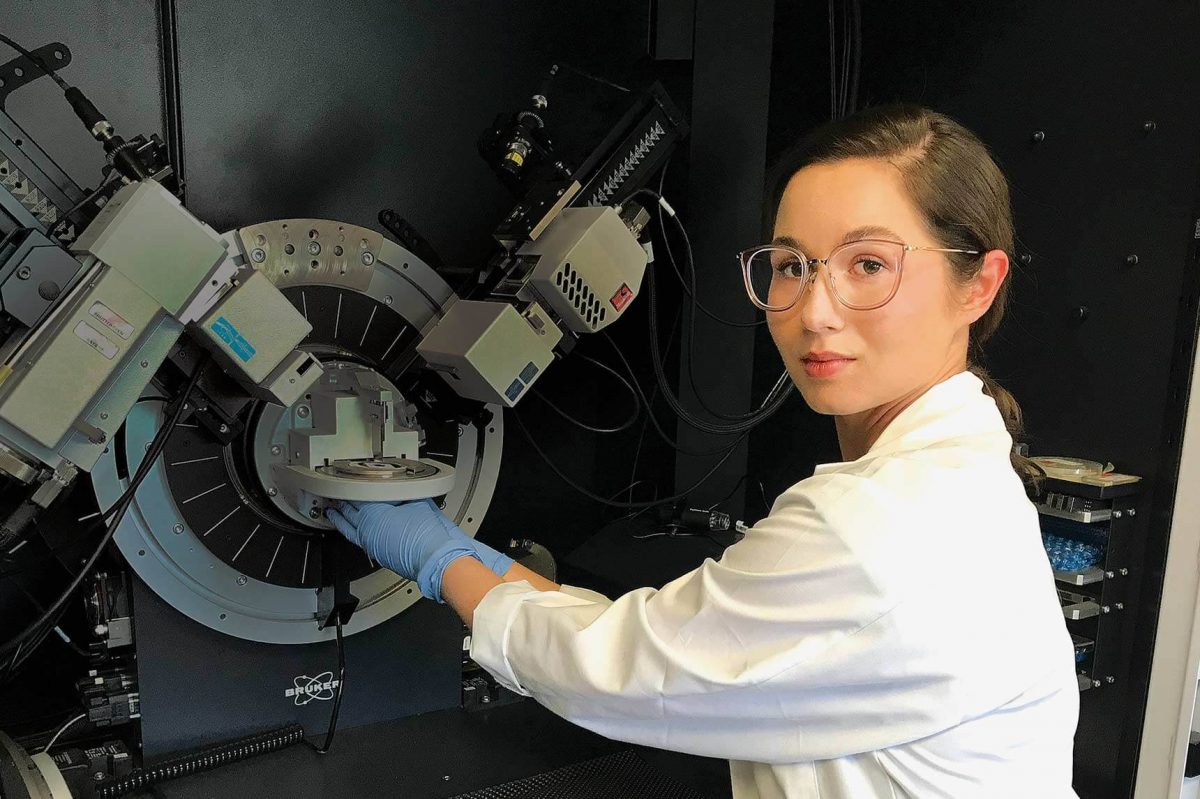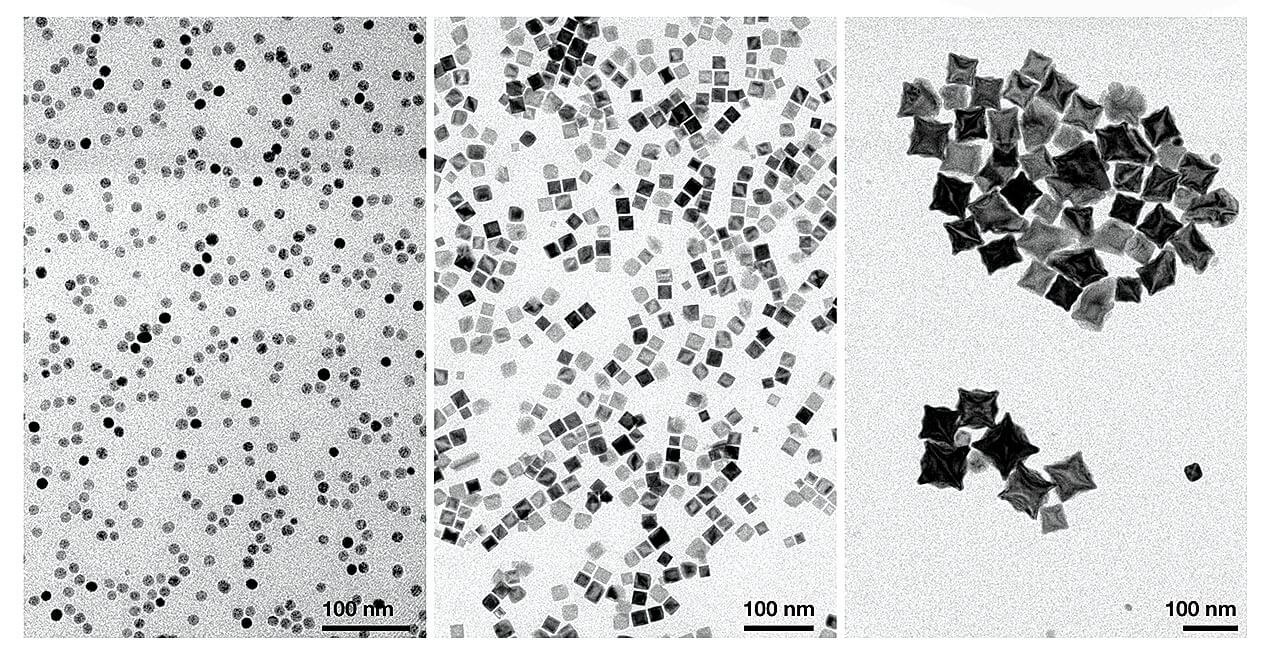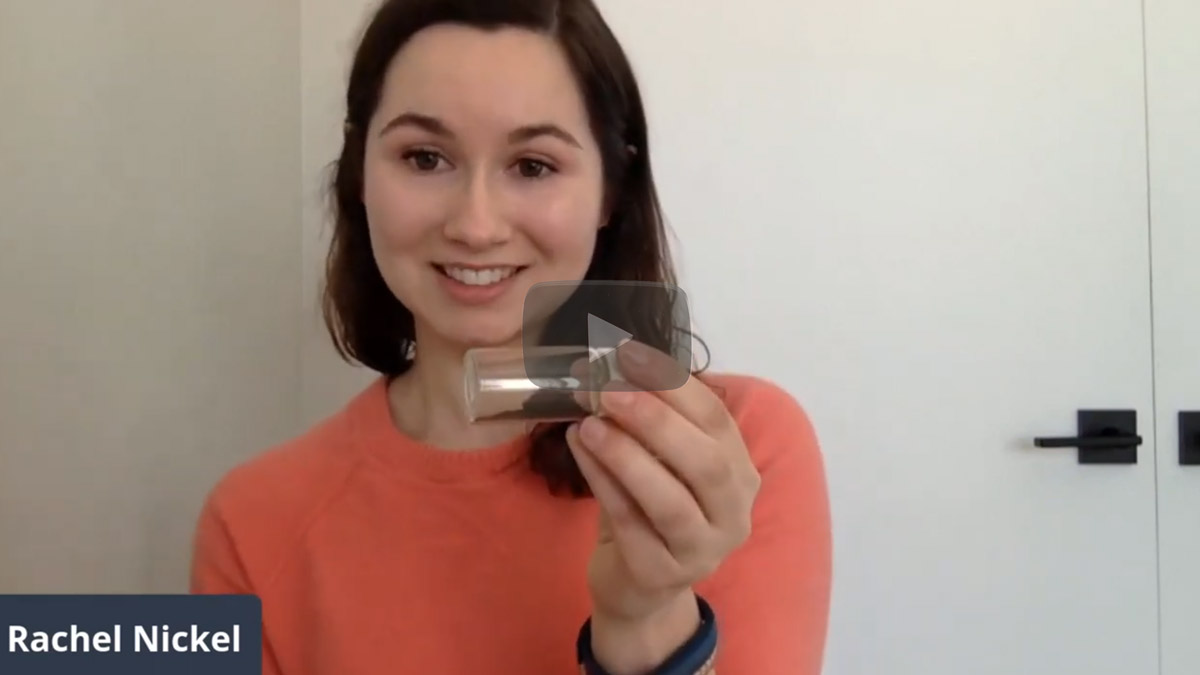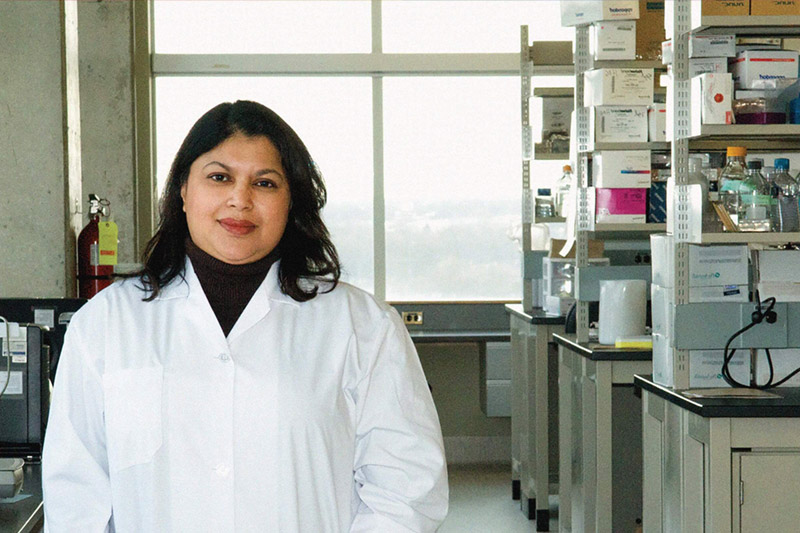
Building nanoparticles for biomedical applications
Functional materials can be thought of as simple LEGO™structures, where the overall properties are determined by the type of the blocks used in construction. Most of the materials that we encounter in daily life are the equivalent of a cube built with large DUPLO LEGOs™ —incredibly well ordered with predictable properties. Just like how smaller pieces increase the intricacy of LEGO™construction, the nanoscale materials that I study contain properties with a complexity not present in bulk materials.

Under the supervision of professor Johan van Lierop, my research is focused on magnetic nanoparticles. Magnetism is fundamentally a quantum mechanical effect and the size of these particles—10,000 of my nanoparticles will fit end-to-end in the width of a single hair—introduces a wealth of new physics. Electronic quantum effects become significant at surfaces, while the interaction between chemical composition and nanoparticle structure changes the material’s properties. As a result, a complete understanding of these systems is elusive because the delicate interplay between interactions within the particles and between particles is not easily disentangled.
To gain new insights into nanomagnetism, I work to build new quantum structures composed mostly of iron and oxygen atoms. Varying the size and shape of these nanoparticles allows me to create different quantum interactions which can then be probed. The fundamental information obtained from these experiments will permit intelligent design of magnetic nano-particle systems for various applications.
“The fundamental information obtained from these experiments will permit intelligent design of magnetic nano-particle systems for various applications.”
In particular, my magnetic nanoparticles are well-suited for biomedical applications. One of the primary reasons for studying iron oxide nanoparticles is that they are non-toxic and have capabilities for both diagnostics and therapeutics.

Sphere, cube and octopod-shaped iron oxide nanoparticles.
For instance, my nanoparticles can be used for new imaging modalities with exceptional contrast and sensitivity that require relatively inexpensive equipment. These magnetic nanoparticles are also capable of converting electromagnetic energy into heat with significant spatial selectivity, giving them great potential for cancer treatments. Via careful control of quantum properties, I aim to combine these diagnostic and therapeutic abilities into a single ‘theranostic’ system, which will make for more efficient treatments.
Using the toolkit of LEGO™-like nanostructures that I am building, my research connects complex quantum science to real world applications. Although they are sub-microscopic, magnetic nanoparticles have enormous potential.
ResearchLIFE
ResearchLIFE highlights the quest for knowledge that artists, engineers, scholars, scientists and students at UM explore every day.
Learn more about ResearchLIFE











